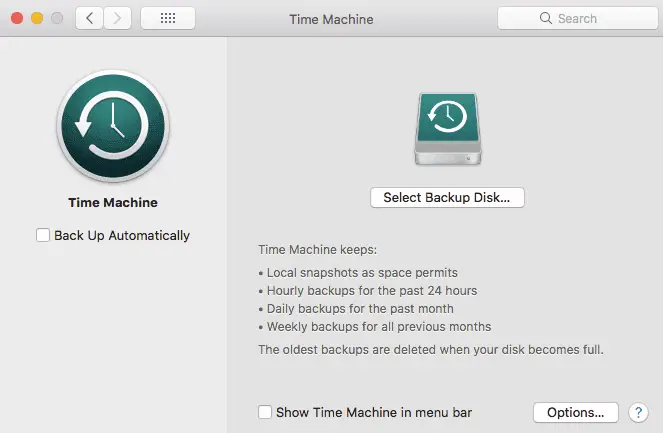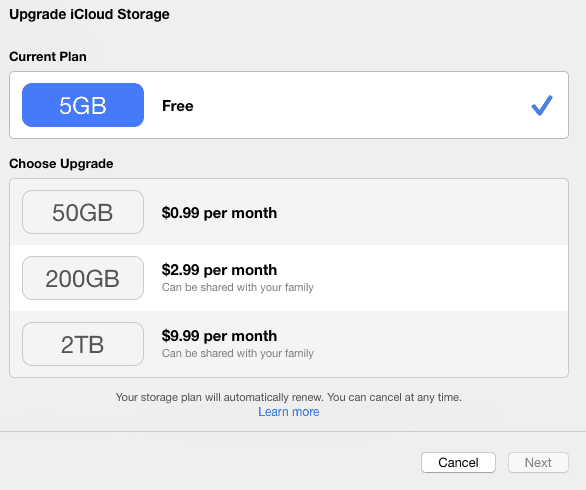Disclaimer: This post may contain affiliate links, meaning we get a small commission if you make a purchase through our links, at no cost to you. For more information, please visit our Disclaimer Page.
If you’re like most people, all your movies, music, data, personal documents, and work projects get stored in one place: your computer.
Can you even imagine if your computer hard drive crashed, got damaged, or got stolen?
Well, guess what? It happens all the time.
The only way to protect your data and your info is to make sure your computer is backed up.
Backing up your computer is extremely important. Everyone talks about it, but do you actually do it? If you don’t, you should start now.
It’s the only way to recover files and documents if your computer gets lost, stolen, or damaged. You’ve spent tons of time acquiring and saving all that information.
Don’t run the risk of losing it because you didn’t spend a few minutes to back it up.
Over the years, computers have come down in price, but the amount of storage they can hold has increased quite a bit. With so many important documents and files on your device, you have to protect yourself and back it up.
Today we’re breaking down everything you need to know about what backing up your computer means and how to actually do it.
Read Article: What Are Threads in a Processor?
Table of Contents
What Does Backing Up a Computer Mean?
To back up your computer means to make an exact copy of its data. A backup will make copies of all your original files so that you’ll have all your important info saved in two places.
In case you lose your laptop, you’ll have a second place to go to to retrieve all your information.
Have you ever worked on an important project for work or school and made a copy or on your desktop in case the original file got damaged or deleted?
That’s a great idea, but if your computer crashes, you’ll still lose both documents. With a computer backup, you’ll have all your info in two separate places.
But first, you’ll need to decide which method of backing up you want to do.
Can I Back Up My Computer With a Flash Drive?
Flash drives (or thumb drives) are one of the most popular ways that people secure their data and files. With a flash drive, you can save copies of documents and files externally and transport them with ease without having to carry your laptop.
They’re great for saving small amounts of data, especially projects that you’re currently working on and can’t afford to lose.
They’re also perfect for collaborative projects, as they’re easy to share. But there are not the best way to backup your computer.
You can use flash drives to backup certain types of files, but it’s better to use a cloud-based storage system or a large external drive.
How Do I Perform a Back-Up?
There are lots of different ways to perform a backup of your computer. You can use a cloud system, an external drive, or a clone backup.
Each will offer you a way to recover your data in case your computer gets lost, stolen, or damaged. You may want to test a few different methods to see which one you prefer or you can use various methods at the same time.
How you do it is up to you; it’s important that you do it and keep up with it on a regular basis.
Bootable/Clone Backup
Sometimes called a clone, you can think of a bootable backup like that spare tire you keep in the trunk of your car. That spare will get you where you need to go or get you to someone who can help.
Without it, you might get stranded on the side of the road.
A bootable backup or clone backup acts the same way. When your computer dies or your hard drive fails, you can hook up your bootable backup to retrieve everything that you’ve lost.
It is a direct and complete copy of your existing computer’s hard drive. With it, you can reboot a computer that’s out of commission.
You can update it as often as you wish, so keep in mind that your bootable backup will only hold the data from your last backup point.
It’s a good idea to update it often so that you’ll never lose any important data. It’s also an easy way to retrieve a file that you may have accidentally deleted.
Like a spare tire, a clone backup is not meant to be a permanent solution. It’s a temporary fix and an effective way to retrieve lost data, but it’s only as good as you make it.
Without frequent updates, you’re sure to experience frustration and heartache if your computer fails.
A clone backup copies every file, data point, software program, and setting on your computer, so it can take quite a while to create. If you opt for this method, it’s best not to use your computer while the clone is being created or updated.
External Backup Drive
External backup drives are very different from flash drives. They offer much more storage space and they’re a little bit bigger so they’re not as easy to lose or misplace.
You can set an external backup drive to run updates as you work on your computer so that you’ll always have your most up-to-date files saved.
External backup drives are ideal for saving documents, music and video files, and photos. Unlike a bootable backup, it won’t back up your settings and software.
Instead, it will read the files on certain drives and in certain folders. In case a file on your computer gets changed, corrupted, or deleted, you can use your external drive to retrieve and recover that file.
With an external backup drive, you can access your files from any computer or laptop. In case your primary device dies, you can plug your external drive into another computer (or a new one).
It’s an easy and effective way to move and transfer files from one PC or laptop to another. You can access all your files as well as see the history of changes and deleted items.
If you decide to use an external drive to backup your PC, look for one that comes with its own backup software.
Mac users can use an external drive in conjunction with Time Machine (found under System Preferences -> Time Machine) to run hourly updates and make a copy of any changes.
Time Machine has some drawbacks, but it has some strong benefits. It will save hourly backups for 24 hours, daily backups for an entire month, and weekly backups for prior months. It’s an easy way to backup files and restore them when you need to.
Laptop users on-the-go may not like that your external hard drive has to connect to your computer. It can be a bit inconvenient having a separate external device connected, but the benefits do outweigh the negatives.
The amount and type info you can put on an external drive depends on its size and capacity. The size will determine how much file history you can use, such as whether it can save previous versions or if it can recover deleted files.
If you need to retrieve a file from last week, you should be able to do so. If you need to recover a file from several months ago, you may not be able to. It all depends on how much other data is being backed up.
Keep in mind that an external backup drive is a hard drive, which means it can fail, get damaged, or break.
If you have an external backup drive that you’ve been using for a while, it’s a good idea to copy it onto another drive or upload your data to the cloud.
Cloud Backup
It’s a great idea to have a local backup (as a hard drive clone or on an external hard drive) by your side to save your most important files and documents on a regular basis.
But if that external drive gets damaged, lost, or stolen, you’ll wish you had your data saved somewhere else.
And the perfect place to do that – the one place that isn’t subject to theft or damage – is the cloud.
Cloud backups are easy to create, easy to maintain, and easy to use. You’ll need to create an account with your chosen cloud storage system (like iCloud, Google Drive or DropBox), download their software, and run the program once to create your online backup. Depending on what solution you choose and the size of your backup, you might need to purchase more online storage space.
You can put in your account information and set your specific preferences to suit your needs. Once you’ve completed the initial set up, the software will handle the rest.
As long as your computer is on and connected to the internet, your cloud backup system will automatically check for updates. There’s nothing for you to do but retrieve those files from the cloud should you need them at a later date.
Concerned that the cloud could get hacked and someone might gain access to your files? It’s unlikely. Files are encrypted so no one else can read them, and they’re not copied to only one drive, but many drives.
Another benefit to a cloud backup is that the cloud uses many different computers and many different drives. Should one fail, you’ll have others to rely on so you won’t lose your files.
Related: How To Backup Your iPhone
Once you upload a file you will never have to upload it again unless you change it and want to save a new version. The software is smart, so it will only save the changed data, making it easy and effortless to save your changes.
The one drawback to the cloud is the time it takes for the initial upload. Depending on the speed of your connection and how much data you need to save, it can take weeks or months to complete.
But once it’s done, saving changes and uploading new files is a breeze.
Which Backup Method Should I Choose?
The method you use is up to you, but we recommend a 3-2-1 strategy. This means that you have three copies of your data.
Start with an external storage device or a clone backup at home, and then find an off-site solution such as an online cloud provider. With your data saved in three separate places, you should be able to save yourself from the stress of losing all your important files.
Plus, you can always pay to increase storage as needed.
When it comes time to buy a new laptop or PC, it will be very easy to download your data to your new computer.
Don’t wait for your computer to crash, get lost, or get stolen to start thinking about backups. Put a plan in place now to make sure that your data is safe. Backup and restore your data often. Regular backups will protect you from data loss.
If you wait, it might be too late and you might lose valuable data that you can never replace.
Create a bootable/clone of your entire PC. Invest in an external drive to hold your most important files, photos, and documents.
Make use of an online cloud system that will automatically run updates as you make changes.
With a system for security in place, you’ll never have to worry about losing your data again.


